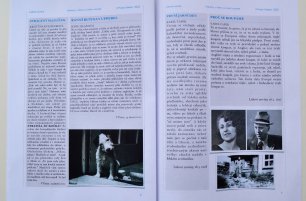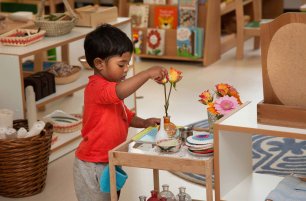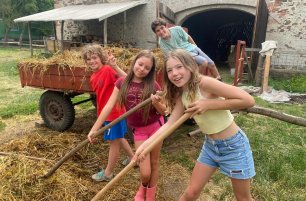Understanding Toddler Behaviors and Ways to Respond
Tantrums and difficult transitions are two of the trickiest challenges parents face with toddlers. Even the most predictable schedules can sometimes lead to moments of overwhelm for your child, leaving you searching for ways to respond effectively. The good news is, with a little creativity and some gentle adjustments to your routine and environment, you can reduce these moments of frustration and help your toddler navigate them more smoothly.
Tantrums
One of the most common behaviors we see that can cause frustration between parents and small children is tantrums. These emotional outbursts can happen anywhere—at home, in the store, or even in the car—and they can leave parents feeling powerless and overwhelmed, too.
Use a Transition Ritual
Instead of abrupt changes in activities, consider building a ritual around transitions. This could be a special song, a unique phrase, or even a small gesture that signals to your toddler that a change is coming. For example, before leaving the park or ending a play session, sing a song or say, “One more minute, then we’ll do something new!” Over time, your child will associate this ritual with the routine, making transitions less jarring and reducing the chances of a tantrum.

Create Calm-Down Zones
Prepare a calm space in your home where your child can go when they’re feeling overwhelmed. This could be a cozy corner with soft cushions, a few favorite books, or quiet toys. When you notice a tantrum is incoming, gently guide your toddler to this space. There they can take a break from the intensity of their emotions. Over time, they will learn that they can return to this spot to reset independently, developing their skills of self-regulation and emotional intelligence.
Offer Simple Choices
When your toddler feels like they are losing control, offering choices can ease this feeling. The key is to keep the available choices simple and aligned with your routine. Instead of saying, "It's time to leave now," try offering two options: “Do you want to put on your shoes by yourself, or do you want help?” These small opportunities for decision-making can diffuse frustration and give your toddler a sense of agency, making them more willing to cooperate.
Prevention of Tantrums Using Visual Cues
If words aren't enough, consider using visual cues to help your toddler prepare. Set up a series of picture cards that represent each stage of the day (e.g., "play," "meal time," "bath," "bed"). Keep these cards in a place where your toddler can easily access them, such as on the wall or in a binder. Before transitioning from one activity to another, show your child the card that corresponds to the next activity, such as holding up the "bath" card when it’s time to transition from playtime. You can even create a schedule board using the pictures of your child during the times so they can familiarize themselves with what comes next. This allows them to visually prepare for what’s next and helps reduce anxiety or resistance to change which is the most common reason for tantrums. Another idea is creating a visual timer such as an hourglass or a digital timer with color-coded sections. As the time passes, the child can see the visual countdown which gives them a concrete sense of how much time they have left in an activity. This helps to minimize the element of surprise during transitions and reduces frustration, as your toddler can clearly see the progression toward the next activity.
Ease a Tantrum Using Visual Cues
In the middle of a tantrum, a parent can use a simple visual cue like a picture of someone taking a deep breath. This could be a card showing a character or animal with big, deep breaths. Hold this visual up or show it to your toddler, encouraging them to mirror the action. The combination of seeing the image and hearing you say, “Let’s take a deep breath like this,” can provide them with a calming distraction and help them focus on regulating their breath rather than escalating emotions. An alternative is using emotion cards or a feelings chart to prompt your child to identify how they are feeling. You can gently show them the card that matches their current emotion and help them express it: “I see you are feeling frustrated, like the red card. Can you show me how we can calm down?” This quick shift can help reframe the situation from one of overwhelm to one of understanding and control, giving the child a sense of agency during a chaotic moment.

Transitions
For toddlers, transitions from one activity to another can be difficult, but with a little preparation, they can be much smoother and less stressful. Here are a few strategies to make these shifts easier:
Incorporate a "Winding Down" Activity
To make transitions from high-energy activities to calmer ones, try introducing a specific winding-down activity. For example, if your toddler is transitioning from outdoor play to dinner, you might introduce a quick game or a calming activity, like a puzzle or reading a short story, before starting the next part of the routine. This little buffer period helps bridge the emotional gap between activities and makes the shift feel more natural.
Be Consistent, but Flexible
While it’s important to keep your routine consistent, don’t be afraid to adjust it if you notice a particular transition is regularly causing frustration. For example, if moving from playtime to dinnertime is a recurring struggle, try shifting the timing of that transition or incorporating a different activity that better suits your toddler’s mood. Sometimes a slight tweak to the schedule can make a big difference in how your child responds to transitions.

Use Positive Reinforcement for Smooth Transitions
When your child handles a transition well, make sure to acknowledge their effort with positive reinforcement. A simple “Thank you for being so patient while we got ready to leave the park” can go a long way in reinforcing good behavior. Over time, these small moments of praise will help your toddler feel more confident and capable in managing transitions.
Maria Montessori’s philosophy was rooted in respecting the child’s need for exploration, independence and self-directed learning. She believed that many frustrations between parents and small children could be resolved by understanding the child’s unique developmental needs and creating an environment that fosters autonomy and love of learning.
While parenting a toddler can sometimes present unique challenges, understanding the reasons behind their behaviors can lead to more compassionate and effective responses, ultimately deepening our relationships with our children. Remember, your toddler is learning, growing, and developing every day through their experiences. By adjusting your approach to tantrums and transitions, you can support your toddler’s emotional development in ways that respect their need for routine and independence. With gentle preparation, creative routines, and patience, you’ll help your child navigate these tricky moments with confidence, and both of you can enjoy the peaceful flow of your well-established day.
By Armonie Reed
Want to learn more? Read our next article:
Ahh-Choo! It’s that time of year - Teaching Self Care to Toddlers







